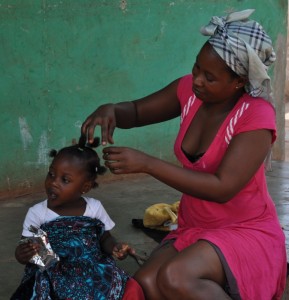 Ghana, the first African country to gain independence in 1957, is seen as a relatively stable and successful nation in the continent. I had a leisure time in Ghana travelling from the southeast to Accra, along the coast to see the Cape Coast Castle and Elmina Castle (both World Heritage properties),then through central Ghana to reach northern Ghana before entering Mali. I had a pleasant stay in Akosombo, Elmina, Kumasi (former capital of Ashanti Empire) and the Mole National Park.
Ghana, the first African country to gain independence in 1957, is seen as a relatively stable and successful nation in the continent. I had a leisure time in Ghana travelling from the southeast to Accra, along the coast to see the Cape Coast Castle and Elmina Castle (both World Heritage properties),then through central Ghana to reach northern Ghana before entering Mali. I had a pleasant stay in Akosombo, Elmina, Kumasi (former capital of Ashanti Empire) and the Mole National Park.
Day 37: Elmina – Kakum National Park – Kumasi (350km: 9 hrs)
On the way to Kumasi, we had an enjoyable guided canopy walk at the Kakum National Park which covers some 350square kilometres of tropical rainforest with pygmy elephants, forest buffalos and the endangered Monameerat. Unfortunately, I saw none of these animals.
We left the park after an early lunch. I was hoping to reach Kumasi by 5pm. Nothing works as planned in Africa. As a result of road work, we were diverted west to Obuasi, a gold mining town and then drove 50km north before reaching Kumasi. I gathered Mike had to drive some 100km more than planned and we did not arrive till 7pm.
We stayed in the Presbyterian Guesthouse. The rooms are basic but clean. As we only had five rooms, I shared a room with Mary and Nicole and slept on the floor using my mattress and those of Nicole. I felt comfortable and had a good sleep.
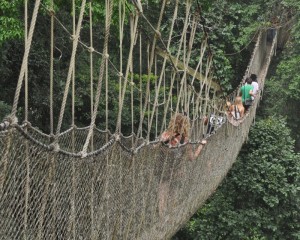 |
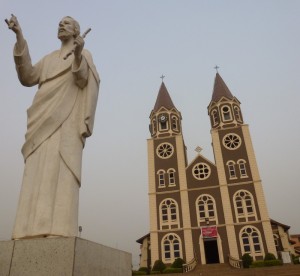 |
Day 38: Kumasi
Kumasi was once the ancient capital of the Ashanti Empire. I went off with Nicole and Mary at 8:15am and walked all the way to the Manhyia Palace Museum where we had a guided tour. Mary felt tired and returned to the guesthouse on her own. I and Nicole walked to the Okomfo Anokye Teaching Hospital to see the Okomfo Anokye Sword, an important Ashanti monument which is said to be in the ground for 350 years. We then walked to National Cultural Centre and visited the Prempeh II Jubilee Museum where there is a fake Gold Stool used to deceive the British when they demanded the surrender of the stool which is a symbol of Ashanti sovereignty.
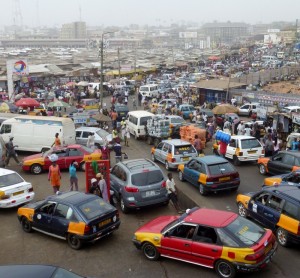 |
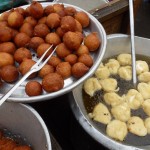 |
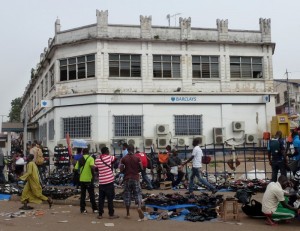 |
Before returning to the hotel, Nicole and I spent another hour wandering in the Kejetia Market which is said to be the largest in West Africa and the second largest in Africa after those of Addis Ababa in Ethiopia. There are alleys of stalls selling second hand clothes, colourful kente cloth and fabrics, Ashanti sandals, batik, vegetables, fruits, fish (both dried and frozen), chicken, beef, mutton, groundnut butter etc. The smell, sights and noise are awesome!
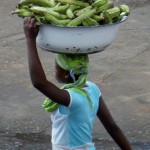 |
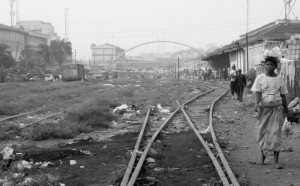 |
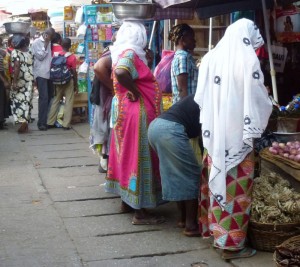 |
Day 39: Kumasi – Fuller Falls (150km; 3hrs)
We had a pleasant 3-hour drive and reached the picturesque Fuller Falls for lunch. We set up our tents and had a leisure day swimming and sitting in the shade. The water is cool and most refreshing! But it got so chilly in the evening that I could not sleep as my sleeping bag was locked away in the truck. It’s my own fault!
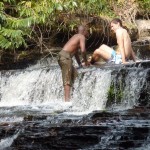 |
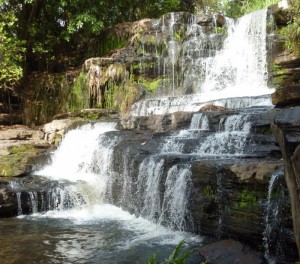 |
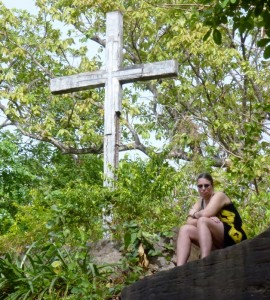 |
Day 40: Fuller Falls – Baobeng-Fiema Monkey Sanctuary –Kintampo Falls – Mole National Park (300km; 9hrs)
We set off at 7:30am and reached the Baobeng-Fiema monkey sanctuary before 10am. We had a guided walk and saw plenty of the Mona monkeys and the Black and White Colombus monkeys. There are some 900 monkeys in the sanctuary and they normally stay in a community of 36. When a monkey is found dead by the villagers, they bury them in a monkey cemetery.
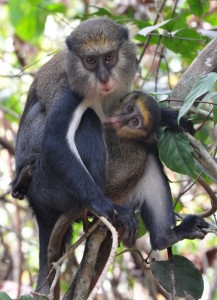 |
We had a lunch stop at the Kintampo Falls which is not as picturesque as the Fuller Falls. But I had a fun time sitting just below the fall as the water is very cold! We were back on the red piste at 2:30pm and did not arrive at the camp site at the Mole National Park till 8pm. The temperature was about 40C and I felt so uncomfortable and exhausted! Mike and Ant reminded us to drink plenty of water and said it would be even hotter in Burkina-Faso and Mali!
Day 41: Mole National Park
I had a busy day. Jess, Berry and I were on cooking duty and I got up before 6am in order to put the kettle on and put bread and jam on the table so that they could have something before the game walk. At 7am we arrived at the park information centre for a briefing and left with a guide for a two-hour walk.
Mole National Park is said to be the best wildlife destination in West Africa with an area of 4,577 square kilometres. I saw some birds including the colourful roller and blue kingfishers. There were plenty of bush bucks, kobs and warthogs. Then an elephant which is said to be over 50 years old posed for us by a mud pool. I had a nice photo with the elephant!
We prepared a fruit salad and scrambled eggs with mushrooms for breakfast. At 11am, seven of us joined a guided tour to see Larabanga, a small Muslim town with a population of 4,000 famous for its striking Sudanese-style mud- and- stick mosque. It is said that the mosque was built in 1421, the oldest of its kind in Ghana.
Ibrahim, our guide who speaks very good English, explained to us how shear butter is made from the karite tree and showed us the cotton tree and another tree which the locals use to cure malaria. He took us to see his two grandmothers. One is 100 years old but looks healthy. She showed us how to spin.
We then went to see a project in the village first initiated by a volunteer from Australia and another from Germany. They are planning to build a school with three classrooms later this year. As there are many orphans whose parents have died from HIV, they are also building a house for the orphans where they can live and have education. I was pleased to see this meaningful project and made a small donation. I also suggested Ibrahim upload information on their income including information on donors and donation and expenditure in their website. Donors would be more prepared to make contribution is they know how the money is used. We all donated some money to the project and I wish him luck.
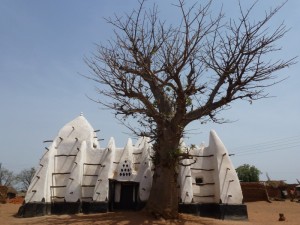 |
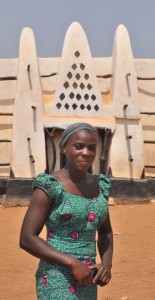 |
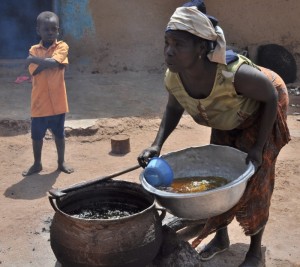 |
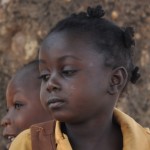 |
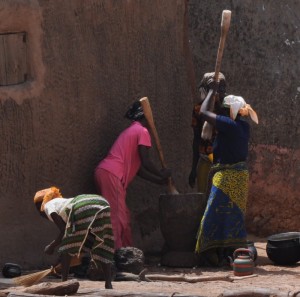 |
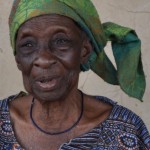 |
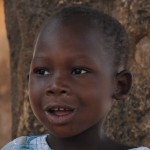 |
Day 42 (February 15): Mole National Park – Burkina Faso (200km, hrs)
We set off early and reached Wa at 11am. As I did not need to shop and cook, I had time for sightseeing. Mary and I visited two local mosques and the Palace built in similar way as the mosque at Larabanga is under restoration. As I always enjoy seeing how the locals live, I found my way to an older quarter next to the palace and met a dozen of local women having their lunch in a compound. They were cheerful and chatty. They even invited me to try their lunch (foufou) and sauce. I spoke to them in English and they responded enthusiastically (though they might not know what I was saying). We had a good time. Both Mary and I took many pictures for them: they all love to see their own faces on the camera screen.
At 1:15pm, the truck was on its way to the border. Things went smoothly and we left Ghana around 4:30pm crossing into Burkina-Faso. Two happy episodes happened. When I came out of the Ghanaian immigration office, I was taken by surprise when a Ghanaian officer spoke to me in Putonghua. He is very proud to be able to speak my language. He said he has learnt the language from a Chinese friend living in the area. Second, I met a young lady trying to sell me a papaya. I said I did not have cedis and could not buy from her. Before I boarded the truck, she offered me a slice of papaya free of charge. She is so sweet and generous that I rushed back to the truck and gave her a packet of biscuit as a gift. She was delighted while I was happy to meet nice people on the street.
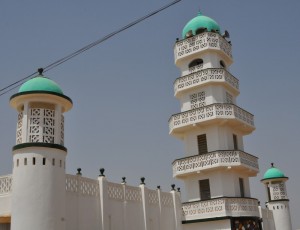 |
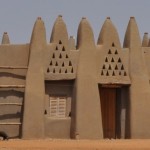 |
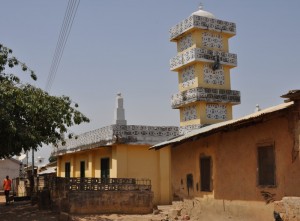 |
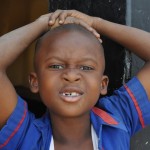 |
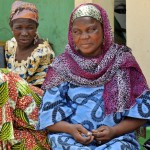 |
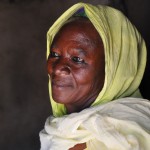 |
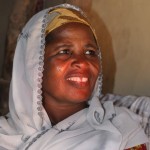 |
Remarks
I find Ghana an easy country for travellers. As a former British colony, English is an official language and there are many things in common with Hong Kong. There are plenty to see and do. The Cape Coast Castle and the Elmina Castle remind me of the ghosts of the past and the unforgettable history and misery of the slavery trade.
During my 12-day trip in Ghana, I travelled some 1,600km seeing different parts of Ghana. Nonetheless, I am sorry to say that Ghana has yet to make a big impression on me. Perhaps, I have expected lots more from this promising African nation: it should be tidy, economically more developed and socially progressive. Ghana is undoubtedly more affluent and stable than most of the African nations. But its shantytowns in Accra, loads of garbage in Kumasi, Elmina and many poor areas our truck has passed through have revealed the poorly and under developed side of Ghana. Given its natural and human resources and political stability for some 20 years, I have expected to see a more developed nation.
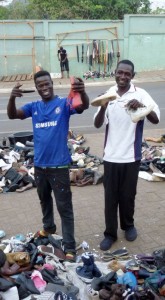 |
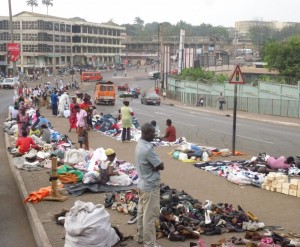 |
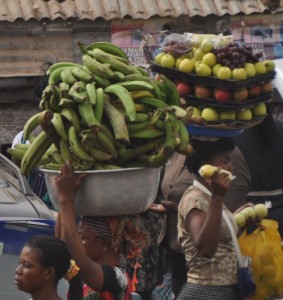 |
Hence, I decide to use ‘ Go Go Ghana’ to express my personal wish to see this young but relatively stable democracy with gold, cocoa and oil to go as fast ahead as possible bringing better livelihood to its people.
I also believe the government and the people should do something to clean up and keep their beautiful country clean especially along the coast. More efforts should be made to educate the population about personal hygiene and the need to preserve its pristine nature if Ghana wants to one of the eco-tourism destinations one day.


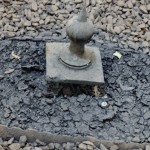
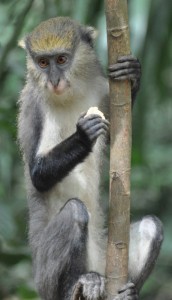
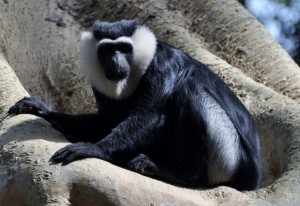
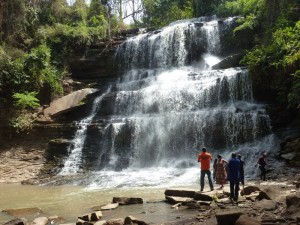
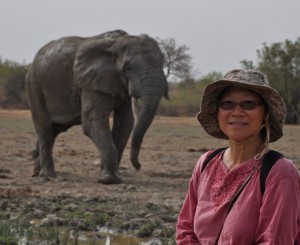
‘GoGo Ghana’, a good pick.
Somehow, my mind turns to slavery stories that I watched in films during my youth years.